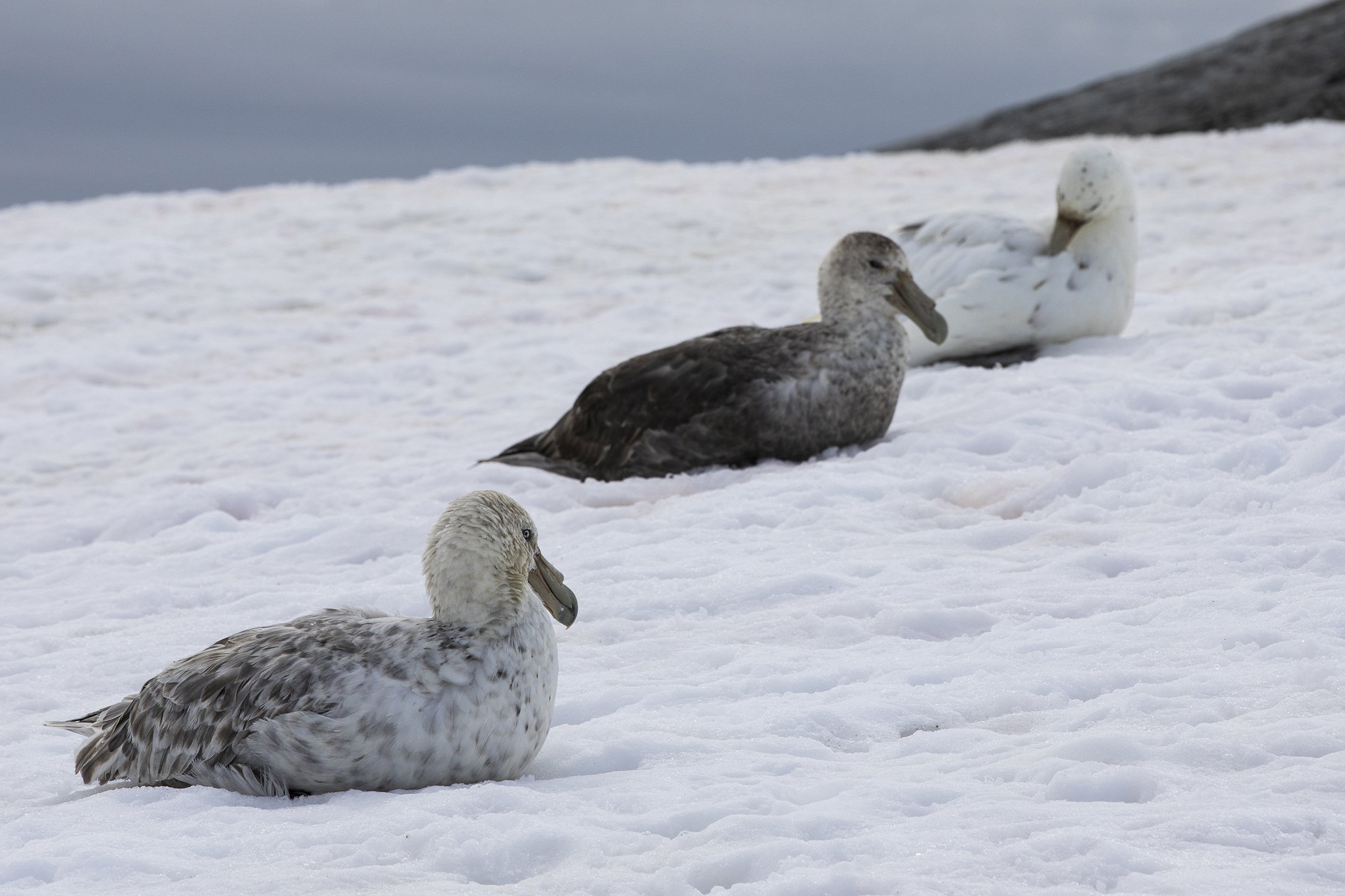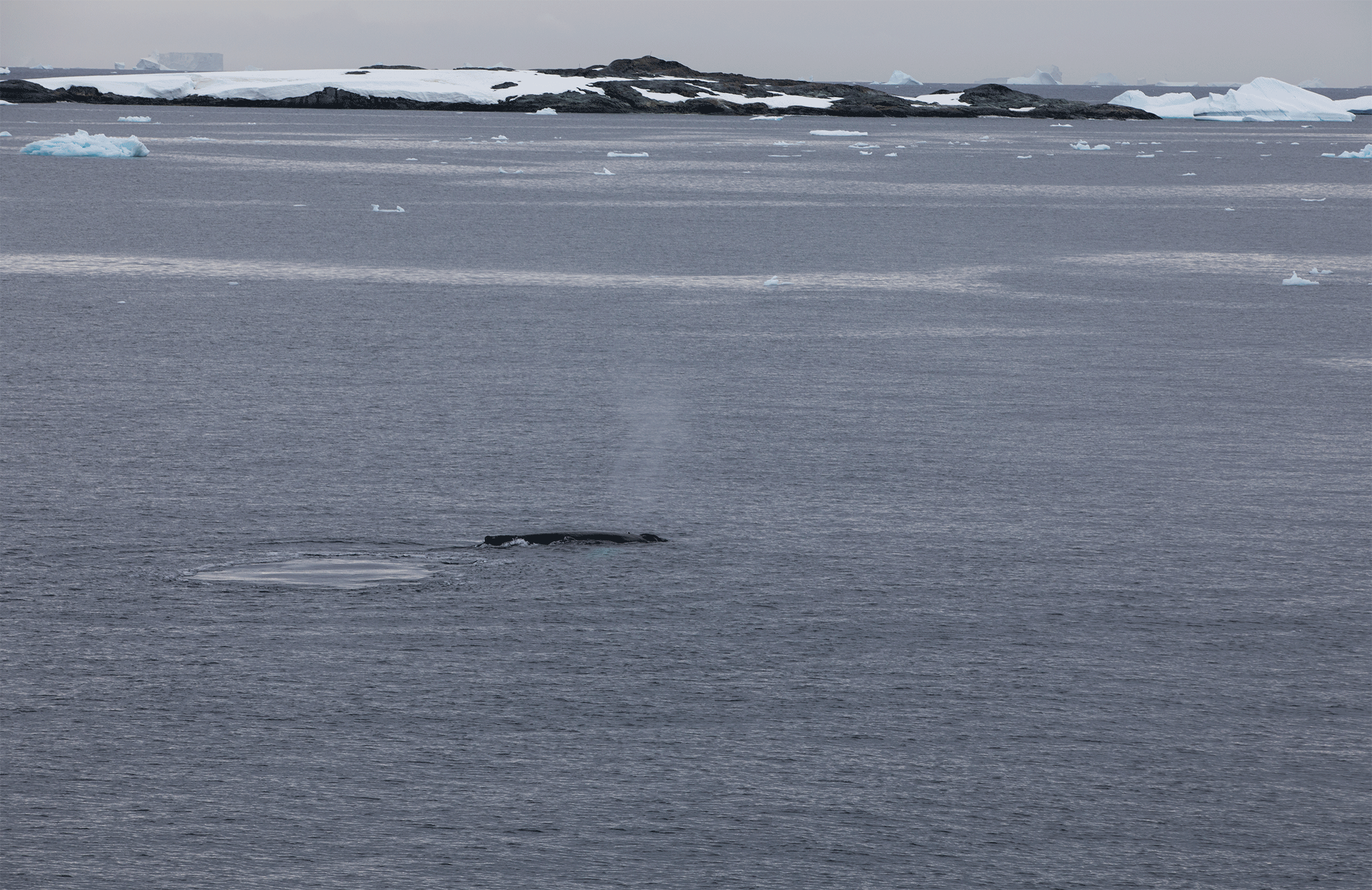On the morning of Day 6, we woke up to land and ice. We were in the Yalour islands.
When you're going to the ends of the earth, you're never really prepared for what you will see. You can research online, read about it ad nauseum, look at pictures others have taken before you. But it still doesn't prepare you for actually being there. This realm of black rock and blue ice we woke up into cannot be sufficiently described in words - it felt like we were on another planet.
We were in a harbor surrounded by absolutely MASSIVE mountains. The day was calm and slightly hazy, the air hung silent, not even a hint of breeze to disturb the mirror surface of the water. After rocking in the open seas for 3 days, we were suddenly perfectly still. We had arrived in Antarctica.
There it was, unbelievably, the color spectrum drained from the world save for all the blues. So many shades, each one seeming unnaturally saturated against the monochrome tableau.
It was time for our first official expedition of the trip - a zodiac ride to see a penguin rookery.
With these offensively bright outfits, you can be sure we were easy to keep track of, but the parkas were wonderful - so warm and cozy, and we got to keep them!
Zodiac selfie. Zodiacs are small boats that ferry 6-8 people on short excursions, and how we got from the ship to our expedition destinations, whether overwater or landings.
a Gentoo penguin colony
after visiting with the penguins we headed over to the nearby Iceberg Graveyard
Icebergs that wander into this shallow bay get grounded and stranded here. In essence, they become islands, a perfect place to explore and marvel at their beauty.
There was an amazing variety of shapes, sizes, and colors in the ice. A lot of the variation is caused by age, and the location that the ice held within the glacier it calved from. Some of the penguins from the nearby colony came around to check us out as we were cruising. As if the scenery wasn't unreal enough, these little torpedoes jumping all around us made it even more surreal.
Ancient organic matter in the ice
Icebergs are inherently dangerous because they move and flip without warning, setting off immense waves. The striations clearly visible in this giant are from its constant shifting and settling, thus finding a new waterline to erode it every time.
Shapes and textures galore as far as the eye can see. You'd think that after taking 400 pictures of ice you've captured it all, but no - it just keeps surprising you at every turn.
Scale is often hard to convey in photos of Antarctica; having zodiacs in the frame helps tell the story of how colossal some of these icebergs are.
This little growler fished out by our expedition guide is very old and very dense, hence its glass-like clarity. You can see a myriad air bubbles inside - air that has been trapped for possibly thousands of years.
Just a little Weddell seal taking a nap
We were lucky enough to spot a leopard seal too, albeit from a distance. After orcas, they are Antarctica's second top predator.
Returning to the ship
Later in the morning, as the second round of groups were touring, we went up to the decks to take some panoramic shots of Yalour.
The play of light and shadow on the snow as clouds moved across the sky was mesmerizing.
Heading to our afternoon destination - Pleneau Islands
This iceberg had its own "beach" - the stunning turquoise water lapping its "shore" looked deceptively like a tropical sea.
Another cruise ship we saw on the way to Pleneau
Pleneau Islands - the site of our first landing!
Just look at the depth of the snowcap on the shore.
Behold the face of someone setting foot on solid land for the first time in six days! I don't even care that I'm wading through a swamp of penguin poo.
Me and some Adelie penguins! It is worth noting that the smell of a penguin colony is not something you will ever forget.
Pleneau had a huge, dispersed colony of Adelies as well as other sea birds like albatross and terns, and being able to walk among them was such a treat. They didn't seem to mind in the slightest, I guess to them we were just huge, ugly penguins.
Almost every family had little chicks.
A few albatross were hanging out.
It's hard to appreciate how huge these birds are. On a photo they look like gulls, but if I were to crouch down next to one, it would be half my size.
Most Antarctic species, and birds in particular, are monochromatic, as opposed to land birds that tend to have more color. Here you won't find any colors outside, white, black, and some browns. Sea birds are also sexually dimorphic, meaning there are no distinguishable differences in size or coloring between males and females.
Before the guests are allowed to land, a crew of expedition guides scouts each location, and marks paths that everyone has to strictly adhere to with little red flags. The idea is to make as minimal an impact as possible on the area. There is a boot disinfecting station at every landing that's brought ashore - and another one on the ship once you return - to ensure no material from one site is transferred to another. We were not allowed to touch snow, sit, or even kneel on the ground - just walk along the designated path and enjoy the experience. Our expedition guides were stationed throughout the island to answer questions and give us more information about the place.
Another spectacular place that seemed too beautiful to be real - something we quickly grew accustomed to.
Some of the people in our group got to kayak here.
Coming through - look out.
All the pink color in the snow is penguin poo - they primarily eat krill, so the excretions come out the same color as the initial product.
When we came back to the ship, a group of whales was spotted in the harbor, giving us a good show to round out the afternoon.
In the evening we sailed through the Lemaire Channel - a narrow channel surrounded on both sides by towering mountains, creating a really dramatic setting.
The weather turned colder and more somber, giving the scene an eerie kind of beauty
The whimsical ice show continued full force
Did I mention it was cold?
Luckily, we had hot wine!
Not ideal sailing conditions, as even small growlers like these can beat up a ship's hull, so we inched along very slowly a few times when the ice encroached, but our captain did a stellar job getting us through safely.
A beautiful midnight sunset to end the day.





















































































































